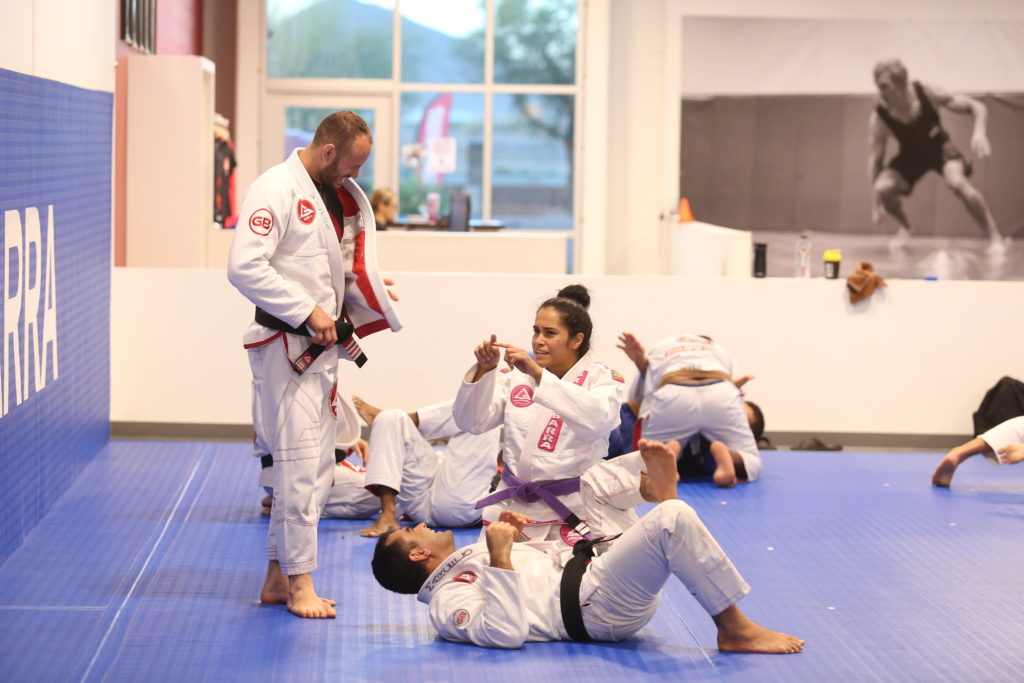GB Student Question: “Is it better to be good at just a few moves?”

A purple belt jiu-jitsu student had a question: “Is it better to have a good, general knowledge of many techniques or to specialize in a few positions?”
ㅤ
An article about the Jiu-Jitsu philosophy of all-time great Roger Gracie spurred a discussion about developing one’s personal BJJ game with an experienced purple belt.
ㅤ
To paraphrase Prof. Roger Gracie: If you go to BJJ class 2 x per week for a year and learn 2 techniques per class, that is a rough total of 200+ techniques.
ㅤ
“200 techniques! How many more do you want?“, says Roger – admitting that he, himself isn’t great at 200+ different techniques. “The ones I’m really good at, I can count on my hands.“
ㅤ
The purple belt had a different take on his own game. He acknowledged as a world-class competitor, Roger would need to have and use his A-Game in competition matches. “For me, as a hobbyist, I’d probably like to be average at a lot of techniques. I’d like solid basics and breadth of knowledge. I don’t mean chasing techniques…” But to have a well-rounded knowledge of all of the different games.
ㅤ
That perspective makes sense. As colored belts in Jiu-Jitsu, we need to be familiar with a large number of techniques, even if only so that we can avoid getting caught by our opponents because we didn’t understand what was happening in the match. Jiu-Jitsu instructors must also have a wide breadth of technical knowledge – even about positions that they don’t use in their own games.
ㅤ
However, as anyone knows who has ever watched an awesome technique on YouTube and couldn’t wait to get to class to nail it on all of your training partners…only to have it fail miserably in live sparring… there is a HUGE gap between “knowing a move” and being able to actually use it!
ㅤ
Roger Gracie explains that a significant reason behind that gap is our deep knowledge of the details which make or breaks the technique. This is why, Roger says, Jiu-Jitsu takes so long to learn. The considerable time that it takes to understand and master all of those details.
ㅤ
In addition to a deeper understanding of the details, there is another factor that makes us able to actually apply those techniques that we know. Mat time. Hours spent in a specific position. The number of times that we have tried a specific technique in live rolling.
ㅤ
A high-level competitor told me in an interview that he saw purple belt as “the rolling belt”. This is a phase of our Jiu-Jitsu learning where we have most likely seen most of the positions that we need to know to be a black belt. Our progress at purple belt comes from rolling and learning HOW TO APPLY those techniques that we “know” on a shallow level.
ㅤ
A smaller core number of techniques studied in great detail, and attempted on a wide variety of training partners is how we close the gap between superficial knowledge of a move and REALLY understanding the move and making it work.
ㅤ
If you talk to black belts (and most love to share their knowledge!) the majority will admit that they have simplified their games. They only use a smaller subset of all of the techniques that they know. They may shrug sheepishly and say “My game is really basic.” In fact, that reminds us of the basic but highly effective game of Roger Gracie?
ㅤ
When you are using a smaller number of techniques in your game, you will get MUCH BETTER at several factors that greatly improve your rolling effectiveness:
- Your recognition of certain situations is rolling.
- You see what is happening faster.
- You have a complete understanding of everything your opponent is going to do in that position.
- You know all of your options.
- You can think and react faster in your familiar positions.
- You can avoid their escapes and always stay one step ahead.
- You may know one technique, but have 100 ways to get into the position.
- You understand all of the details and can make the micro-adjustments to really make the move dangerous and shut down the opponents’ counters and defenses.
ㅤ
Roger uses the example of the Kimura from side mount.
Roger asks “How many techniques for doing a Kimura from Side Control are really necessary to know?”
ㅤ
The most likely answer is just the basic one. If you understand how to execute that technique very well, you’ll be catching everyone with it says, Roger. But learning the fine details of that basic Kimura, applying them consistently…THAT makes us truly effective and what takes time.
ㅤ
This is all much easier if we focus on a smaller number of basic techniques that fit our games well.
ㅤ
How do you think about your own Jiu-Jitsu game? Know A LOT of moves, or work on a basic game with a smaller number of moves?
ㅤ
GB Values: Jiu-Jitsu Culture
ㅤ
ㅤ
Credits: Mark Mullen
Gracie Barra Black belt based in Asia
